The Enlightened Truth about Christmas
 Today is St. Lucia’s Day, the first of the 12 Days of Light honoring the Star of Bethlehem. Tonight we light up the decorations!
Today is St. Lucia’s Day, the first of the 12 Days of Light honoring the Star of Bethlehem. Tonight we light up the decorations!
But, today is also a good time to reflect on the importance of Christmas.
 Today is St. Lucia’s Day, the first of the 12 Days of Light honoring the Star of Bethlehem. Tonight we light up the decorations!
Today is St. Lucia’s Day, the first of the 12 Days of Light honoring the Star of Bethlehem. Tonight we light up the decorations!
But, today is also a good time to reflect on the importance of Christmas.
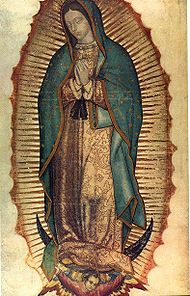 The AUR liturgical year opens with a series of holidays emphasizing the multi-cultural, multi-faith scope of American Reform Unitarian Christianity.
The AUR liturgical year opens with a series of holidays emphasizing the multi-cultural, multi-faith scope of American Reform Unitarian Christianity.
All Corners Day on November 12 honors “Pious Outsiders” from other nations and faiths. The Thanksgiving season is famously devoted to peaceful cooperation between different ethnic and religious communities. And, these holidays culminate on January 6 with Epiphany — the epitome of Christian syncretism — which commemorates the adoration of infant Jesus by the Magi, who were foreigners to Judea and members of a non-Abrahamic religion.
December 12, which is the last of the 12 Days of Gold commemorating Mary’s motherhood, is also in the tradition of inter-faith community. On this day, in conjunction with Roman Catholics we honor the Our Lady of Guadalupe, who is believed by many scholars to be an exaptation of Aztec devotion to Tonantzin, meaning “Our Mother,” a title bestowed upon various divine female figures, similar to the Hindu term Devi.
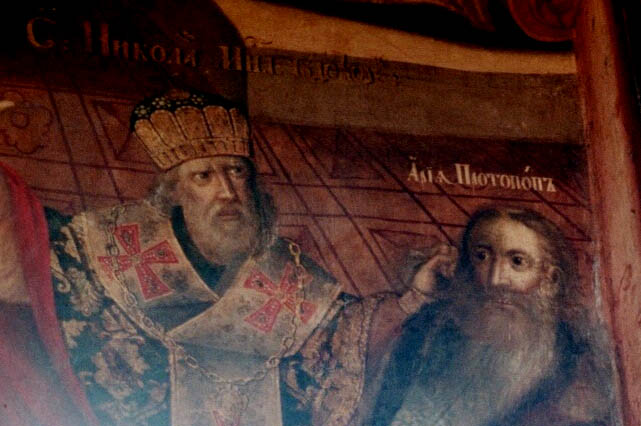
Nicholas of Myra punching Bishop Arius at the Council of Nicaea
The birth of Jesus Christ may be the “reason for the season,” but for millions of children the man of the moment is Santa Claus.
While it is widely known that the Santa Claus of Christmas is derived from St. Nicholas, few know much about the original Saint Nick beyond the fact that he did not live at the North Pole, own flying reindeer, or employ a workshop full of elves.
Nicholas was a political ally of Athanasius of Alexandria during the Church intrigues of the 4th Century that led to Trinitarianism. And, like Athanasius, he is rumored to have come into power at an absurdly young age through dubious means.
Below is the American Unitarian Reform liturgical calendar for the Christmas Season.
Since this season is not fixed, the ultimate Thursdays for the first two dozenals are not identified on the calendar. The last dozenal, the Twelve Days of Christmas, has no ultimate Thursday as such.
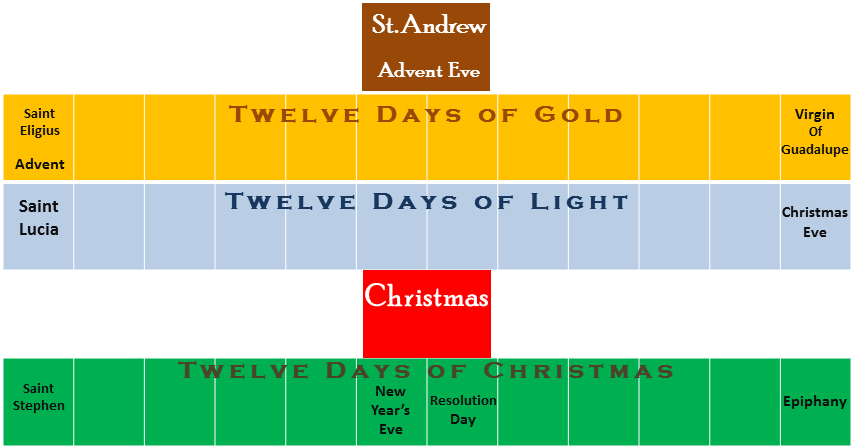
Advent Eve / Feast of Andrew – (Nov 30) Anticipation of Advent and commemoration of the first disciple of Jesus.
12 Days of Gold – (Dec 1-12) Celebration of Mary’s Motherhood, time for unlit Christmas decorations, and for placing Mary and the Angel in the crèche.
~ 1st Day / Advent / Annunciation / Feast of Eligius – (Dec 1) Commemoration of the revelation of Jesus’ coming to Mary, and celebration of St. Eligius, patron of goldsmiths.
~ Golden Thursday / Observation of Advent– (Ultimate Thursday in the Dozen)
~ 12th Day / Feast of the Virgin of Guadalupe – (Dec 12)
12 Days of Light – (Dec 13-24) Celebration of the Star of Bethlehem, time for lit Christmas decorations, and for placing Joseph and the Star in the crèche.
~ 1st Day / Feast of Lucia – (Dec 13) Celebration of St. Lucia, matron of light and sight.
~ Lightened Thursday / Observation of the Star – (Ultimate Thursday in the Dozen)
~ 12th Day / Christmas Eve – (Dec 24)
Christmas Day – (Dec 25)
12 Days of Christmas – (Dec 26 – Jan 6)
~ 1st Day / Feast of Stephen – (Dec 26) Celebration of the first martyr.
~ 6th Day / New Year’s Eve – (Dec 31)
~ 7th Day / New Year’s Day / Resolution Day – (Jan 1)
~ 12th Day / Epiphany – (Jan 6) Commemoration of the Adoration of the Magi and interfaith communion.
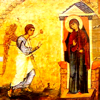 The Reform celebrates the beginning of the Christmas Season with Advent/Annunciation on December 1st.
The Reform celebrates the beginning of the Christmas Season with Advent/Annunciation on December 1st.
This differs significantly from other Christian traditions, which celebrate Advent four Sundays before Christmas, and celebrate the Annunciation (the day on which Mary was told by the Angel Gabriel that she would conceive Jesus) on 25 March, a materialist nine months of biological gestation prior to Christmas.
For the Reform, the historical placement of the Annunciation is not as important as the inspirational role it plays as part of the Nativity story. By observing this herald of the Nativity together with Advent, AUR brings the entire narrative of the birth of Jesus together in one ritual season, setting aside December as a month of preparing for new beginnings: the beginning of the life of Christ, the beginning of the era of the Tree of Life, and the beginning of the new year when December finally turns over to January.
Reform Unitarian Advent is also the traditional feast day of St. Eligius, patron of goldsmiths, giving us the start of the first Dozen of the Christmas season: the Twelve Days of Gold celebrating Mary as the Mother of Jesus, culminating with the feast day of Our Lady of Guadalupe on December 12th.
Now is the time for unlit Christmas decorations, and for placing Mary and the Angel in the crèche!
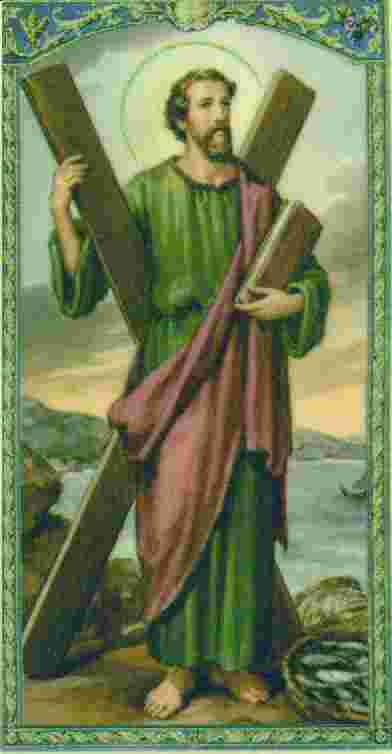 Andrew is not the most well-known Apostle.
Andrew is not the most well-known Apostle.
However, he was the first disciple of Jesus Christ. He was also the brother of Simon who later became St. Peter, the Rock of the Church. In fact, it was Andrew who introduced Simon to Jesus.
Andrew was also a fisherman (as was Simon Peter) and it was through interaction with him that Jesus first became associated with the fish, one of the earliest symbols of Christianity.
It is fitting, then, that the Feast of St. Andrew also be the Eve of Advent, in anticipation of the first idiomatically Christian season of the AUR calendar, Christmas!
On St. Andrew’s Day, let’s look forward to the Season. (And, do something nice for your siblings!)
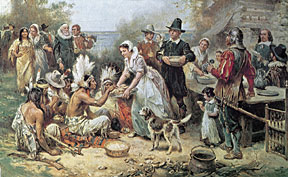 Thanksgiving is often recognized as an inter-cultural holiday, celebrating the cooperation of European Pilgrims and Native Americans, but it is also an interfaith holiday. After all the Wampanoag were not Christian.
Thanksgiving is often recognized as an inter-cultural holiday, celebrating the cooperation of European Pilgrims and Native Americans, but it is also an interfaith holiday. After all the Wampanoag were not Christian.
For American Reform Unitarians* the interfaith nature of Thanksgiving actually reinforces its Christian importance, for we see Christianity not as a religion defined against others, but as an idiom of Truth that can be translated into other idioms.
[This Thanksgiving message was originally published in 2008]
True Christianity has from its inception been a religion that sees the good in members of other religions.
Jesus praised the faith of the pagan centurion over that of his fellow Jews, and used a member of the hated Samaritan sect (considered heretics at the time) as a symbol of goodness in explicit contrast to leaders of his own faith community. When ministering to the Greeks, the Apostle Paul even went so far as to claim that the “Unknown God” long worshiped in Hellenistic religion was in fact the very same God of Abraham and Jesus.
Some might dismiss Paul’s assertion as a marketing technique, and perhaps so. However, the willingness to seek Christian truth in other religions validates Christianity as a religion about reality rather than a religion merely about itself.
There is, in every religious community, a moral tension between loyalism and realism. By realism here, we do not mean the “Christian Realism” of Niebuhr, but realism in the sense that religion is seen as an idiomatic description of reality, therefore open to other forms of description.
This is opposed to the loyalist approach in which that description becomes a mere catechetical shibboleth, a catch-phrase or password, distorting the religion into an entrenched camp isolated (by its own members) from the rest of the universe.
A religion truly about the Creator cannot be an enclave in Creation. The truth of God does not need to be spread across God’s own work by a tiny minority of creatures; God’s truth is evident throughout the universe.
Justin Martyr, despite his sainted status, is likely the primary culprit in this God-denying loyalist tradition as he was the first to attribute other religions entirely to the action of devils. One step more “realistic” is the approach of Paul and other missionaries who attempted to exapt the language and imagery of the cultures they encountered for Christian truth.
But, while this approach treats idiom properly as a tool rather than the stuff of religion itself, it is still prone to error due to the implication that only the language of other religions is valid, not the underlying reality that language describes.
Again, this sort of religion implies an agoraphobic god who fashions a vast universe only to cower in one tiny corner of it, charging mere humans with braving the immeasurable remainder of it in his stead. Religion that genuinely worships the Almighty Creator does not insult God in this way.
The idiomatic approach of Reform Unitarianism takes realism to its full measure by recognizing that some of the underlying ideas of other religions must be valid if the God we worship is indeed the God of all Creation, and not merely an imagined god of ethnic or sectarian autolatry.
For us, the Thanksgiving story represents two groups of God’s children, speaking in different idioms, coming together for a precious moment of peace and communion. The words and labels each used to discuss the ultimate nature of reality and its moral implications may have differed, but if there is such an Ultimate Truth then it must be the same Ultimate Truth for all, despite the difference in languages used to describe it.
The politicized, sectarian, God-denying, and autolatrous view is that the Native Americans were un-Christian heathens. The truly Christian, universal, Creator-affirming, moral view is that while the compassion the Wampanoag showed the Pilgrims may not have been “Christian” charity, it was certainly Christian charity.
Have a wonderful feast day, and give thanks for all of the blessings in your life!
_
* American Reform Unitarians revere Thanksgiving’s Harvest Thursday as one of the Four Great Thursdays alongside Declaration Thursday, Garden Thursday, and Ascension Thursday.
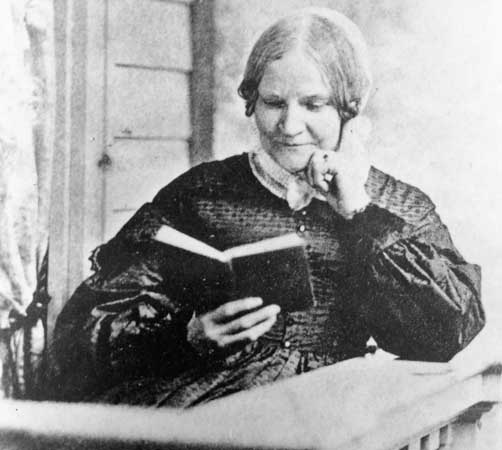 Many readers may recall the line “over the river and through the wood” as part of a song called A Merry Christmas at Grandmother’s, but the song was originally a Thanksgiving tune, with the ultimate destination Grandfather’s house.
Many readers may recall the line “over the river and through the wood” as part of a song called A Merry Christmas at Grandmother’s, but the song was originally a Thanksgiving tune, with the ultimate destination Grandfather’s house.
And, the song was originally a poem called “A Boy’s Thanksgiving Day” written in the 1840s by Lydia Maria Child, a remarkable Unitarian who advocated for women’s rights and the rights of Native Americans. A novelist ahead of her time, she also followed the track of abolitionism in the 19th Century, first advocating a pacifist approach yet later accepting the unfortunate need for violence to effect the liberation of African-American slaves.
As we celebrate the 12 Days of Thanksgiving, it is important to honor the author who wrote the most well-known Thanksgiving lyrics, and who exemplified the Reform Unitarian approach to this season, open to the joy and practical virtue of meetings between cultures, while still keeping eyes open to the tragic consequences that often attend to those meetings.
May God bless the memory of Lydia Maria Child.
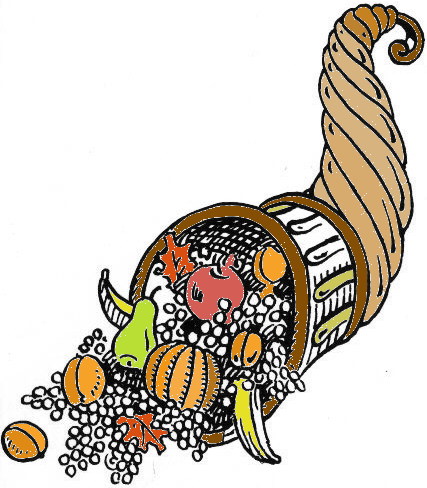 Vital to the full vision of Thanksgiving, as we remember that good things come to our lives through meetings, is the risk involved in such meetings.
Vital to the full vision of Thanksgiving, as we remember that good things come to our lives through meetings, is the risk involved in such meetings.
Human beings need to mix and mingle — not only to make life worth living, but also to grow and adapt to our changing environment. Still, this exchange is not without the potential for danger, as the sad fate of the Wampanoag after the first Thanksgiving demonstrates.
The meeting of worlds can end in epidemic, misunderstanding, hostility, and even warfare. The history of America, and indeed the entire world, is written in the twin pens of strife and cooperation.
And, for Reform Unitarians, it is important to recognize the harsh realities of life before celebrating the wondrous potentials, which is why we observe a solemn Remembrance Thursday one week before the Feast of Thanksgiving on Harvest Thursday.
REPOSTED FROM 2009
 Today is the first of the Twelve Days of Thanksgiving: Diversity Sunday!
Today is the first of the Twelve Days of Thanksgiving: Diversity Sunday!
While Diversity Sunday may not be as important as Remembrance Thursday or Harvest Thursday itself, this introduction to the celebration is vital to the full vision of Thanksgiving, as we remember that good things come to our lives through meetings.
These may be meetings of different opinions, as in the Continental Congress where America’s Founders met. They may be meetings of different families, as at a wedding, or different religions, as in the Christmas story of three Magi traveling to Judea. They may be different cultures, or even different business theories or scientific hypotheses. All new things, and therefore all new good things, come to our lives through meetings with others.
It is important to value diversity not simply for the sake of conflict-aversion, a “politically correct” way of not hurting anyone’s feelings, but to value it in full and rational recognition of the great value that difference plays in individual and societal growth. Diversity is a rational expression of the virtue of Hope, openness to good turns in life.
And, for Reform Unitarians this day’s message of being open to diversity is particularly meaningful as it falls on Sunday, the Holy Day of many other Christians of different denominations. Happy Diversity Sunday!